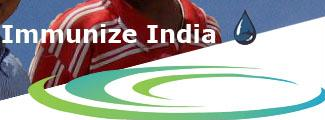General instructions:
- Vaccination at birth means as early as possible within 24 to 72 hours after birth or at least not later than one week after birth
- A written consent is not necessary before vaccination. However, the parents should be informed about the disease/s the vaccine prevents and the common adverse effects.
- The following measures may be adopted to reduce the pain of vaccination:
- Breast feeding before, and immediately after vaccination
- Concentrated sugar solutions (24% sucrose, 2 ml) a few (1-2 min) minutes before vaccination
- Rapid injection technique without aspiration
- Inject the most painful vaccine last to reduce pain at the time of injection e.g., MMR/V followed by DPT
- Distraction techniques: deep breathing, watching a mobile/iPad, etc.
- Prior to vaccination, hand washing with soap and water is recommended if the hands are visibly dirty. Otherwise, disinfection with an alcohol-based hand rub is necessary before every patient contact for vaccination.
- Gloves are necessary when the health care personal (HCP) has some open lesions on the hands or the HCP is likely to come into contact with potentially infectious body fluids.
- Simultaneous vaccination implies administration of 2 or more vaccines at the same time or within the same immunization session (about 6 hours).
- All recommended vaccines can be administered at the same visit. The only exception is PCV13 and Menactra. In children with functional or anatomic asplenia, the two vaccines should not be administered at the same visit. They should be administered separately, PCV first followed by Menactra 4 weeks later. This exception is not applicable to Menveo.
- The recommended age in weeks/months/years means completed weeks/months/years
- Any dose not administered at the recommended age should be administered at a subsequent visit, when indicated and feasible.
- The use of a combination vaccine generally is preferred over separate injections of its equivalent component vaccines
- When two or more live parenteral/intranasal vaccines are not administered on the same day, they should be given at least 28 days (4 weeks) apart; this rule does not apply to live oral vaccines.
- Vaccine doses administered up to 4 days before the minimum interval or age can be counted as valid (exception rabies). If the vaccine is administered ≥ 5 days before minimum period it is counted as invalid dose.
- If given <4 weeks apart, the vaccine given 2nd should be repeated, at least 4 weeks after the invalid dose.
- The minimum interval between 2 doses of same inactivated vaccines is usually 4 weeks (exception rabies). However, any interval can be kept between doses of different inactivated vaccines.
- Any number of antigens can be given on the same day.
- 2 or more inactivated vaccines or an inactivated and a live vaccine, can be administered simultaneously or at any interval between the doses. 2 or more live vaccines have to be administered simultaneously or at least 4 weeks apart.
- Changing needles between drawing vaccine into the syringe and injecting it into the child is not necessary.
- Except for vaccines authorized under the multi dose vial policy, multi-dose vaccine vials, that have had the protective cap removed, should be discarded at the end of the immunization session.
- Different vaccines should not be mixed in the same syringe unless specifically licensed and labeled for such use.
- Patients should be observed for an allergic reaction for 15 to 20 minutes after receiving immunization(s).
- When necessary, 2 vaccines can be given in the same limb at a single visit.
- The anterolateral aspect of the thigh is the preferred site for 2 simultaneous IM injections because of its greater muscle mass.
- The distance separating the 2 injections is arbitrary but should be at least 1 inch so that local reactions are unlikely to overlap
- Diluents are not interchangeable. Diluents vary widely in composition, and therefore only the diluent assigned by the manufacturer for the specific vaccine and presentation should be used.
- Aspiration of the syringe plunger is not necessary before the injection is given. There are no data to document the necessity for this procedure. Moreover, this procedure makes the injection more painful. If blood appears after negative pressure, the needle should be withdrawn and another site should be selected using a new needle and fresh vaccine.
- A previous immunization with a dose that was less than the standard dose should not be counted, and the child should be re-immunized as appropriate for age.
- All precautions should be taken to administer a vaccine by the recommended route only. If by error, live attenuated viral vaccines, which are usually administered subcutaneously have been inadvertently given by the intramuscular route, it need not to be repeated. Inadvertent subcutaneous administration of inactivated Hepatitis A vaccine and IPV is also considered valid. For all other vaccines administered by a nonstandard route, the dose should be considered invalid and repeated.
- For the above 2 situations, live attenuated vaccines should be administered at least 4 weeks after the invalid dose, while the inactivated vaccines can be administered at any interval after the invalid dose.
- Except for the Yellow fever vaccine, no other vaccine is contraindicated in egg-allergic individuals.
- General recommendations regarding spacing between vaccines and corresponding antibody containing products containing products:
- If a vaccine is administered first, the antibody containing product may be administered after a gap of at least 2 weeks.
- If the antibody containing product is administered first, the vaccine may be administered at least 3 months later. This interval will vary according to the type and content of the antibody containing product. The details are given in the ACVIP Guidelines 2018-19 handbook.
- Live vaccines should not be administered to women known to be pregnant. In general, inactivated vaccines may be administered to pregnant women for whom they are indicated
- The only vaccine contraindicated during breastfeeding is the Yellow Fever vaccine.







